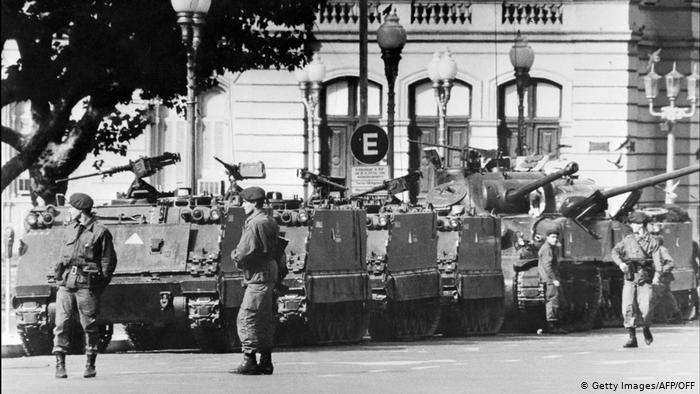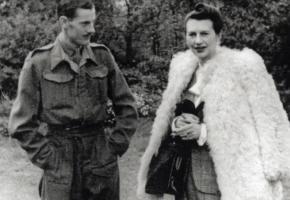What was Operation Condor?
From the late 1960s to 1980s, Condor stood for a systematic plan of regional repression in South America which reached its brutal climax from 1975 to 1978. It consisted of a secret intelligence-sharing network which facilitated joint operations to track down political opponents, or ‘subversives’, across the region. The Pentagon and the CIA supported Operation Condor; in accordance with the US foreign policy to target and eliminate any suspected leftists during the Cold War and to thwart Communist expansion.
Operation Condor operated alongside domestic repression and specifically targeted political exiles in South America, as well as a handful of countries outside the region including Italy, the USA, and Spain. Thousands of citizens fled their countries seeking refuge in Chile, followed by Argentina. By 1973, Argentina was the only nation in the region under some form of democracy. Once the country also fell to military rule in March 1976, the political exiles were trapped. Argentina, followed by Uruguay and Chile, thus became breeding grounds for Plan Condor’s borderless repression.
Victims were picked up by death squads from their houses, workplaces or from the streets and transported to clandestine detention centres across the continent. There, they were tortured, raped and murdered before their bodies were buried in mass unidentified graves or thrown into the ocean during the so-called ‘death flights’. Detained pregnant women were forced to give birth in unsanitary and inhumane conditions before their new-borns were unlawfully adopted by sympathisers of the military regime.
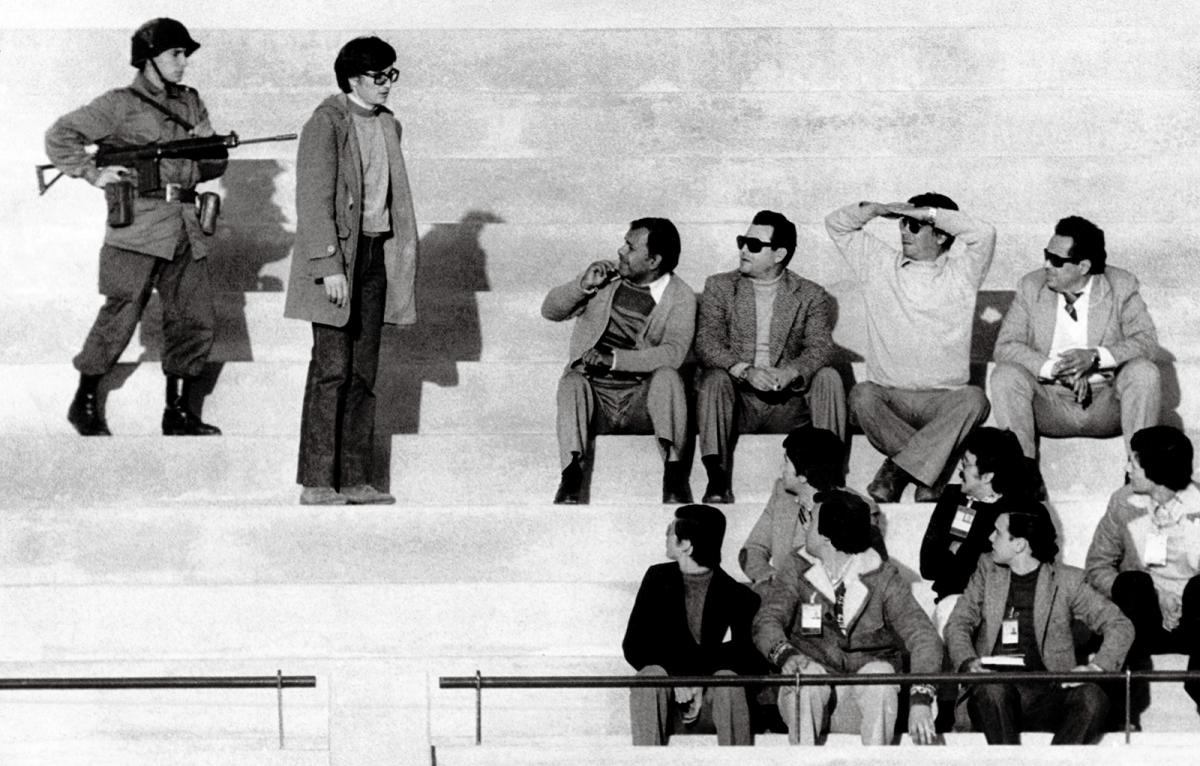
For years, Operation Condor remained under a cloak of secrecy and the only tangible evidence of its existence was limited to an FBI note cited in a book by John Dinges and Saul Landau. As Dr Francesca Lessa explains: ‘[Operation Condor] was a Pandora’s box which governments did not want to open’. A key turning point occurred in 1992 when the young magistrate, José Agustín Fernández, forced his way into a police station in the outskirts of Asunción, Paraguay, where he had been told that there were secret Condor files. Fernández’s suspicions were correct: he unveiled over half a million sheets of paper, alongside photographs of victims, which became known as ‘The Archive of Terror’. These documents confirmed the formal establishment of Operation Condor in November 1975 when Chilean dictator General Pinochet’s spy chief, Manuel Contreras, invited 50 intelligence officers to Santiago de Chile. On 28 November, the murder club was formed with Chile, Argentina, and Uruguay as its ringleaders. Brazil joined the next year, followed by Peru and Ecuador in 1978. At its peak, Operation Condor engulfed over 10% of the world’s populated mass.
Yet, for several decades, these crimes remained unprosecuted. During the democratic transition in South America, many countries swiftly instated amnesty laws which hampered the investigation and prosecution of human rights violations during the dictatorship era. The transnational nature of the Condor murders added another layer of complication. The creation of the International Criminal Court (ICC) in 2002 was a watershed moment allowing Condor crimes to be trialled through the international criminal justice system. Finally, in 2019, the US handed over 47,000 pages of documents to Argentina which showed how the US and Europe had turned a blind eye on Operation Condor. Since then, prosecuting the Condor torturers has been a long and piecemeal process with several court cases in Rome, Buenos Aires and elsewhere.
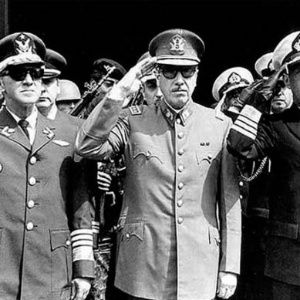 General Augusto Pinochet and his spy chief Mnauel Contreras
General Augusto Pinochet and his spy chief Mnauel Contreras
What was the Rome verdict?
July’s verdict in Rome is a glimmer of hope for victims’ families and activists who have struggled for forty years to ensure that these transnational human rights violations do not remain under the blanket of impunity. Italy’s Court of Cassation (equivalent to Supreme Court) reinstated the July 2019 judgement by the Rome Court of Appeals against the Condor killers.
The Court investigated accusations of two crimes- murder and crimes committed against Italian citizens while abroad- concerning 20 South American defendants. However, the Court discovered that three defendants were deceased due to old age: including Bolivia’s former President Luis Meza and his Interior Minister, Luis Arce Gomez. The Supreme Court requested further clarification concerning the status of three Peruvian defendants: former President Francisco Morales, and military men German Ruiz and Martin Martínez. Overall, the Court convicted 11 Uruguayans and three Chileans. The Peruvians will attend a separate hearing expected to take place during the Autumn.
The Chileans charged with the disappearance of Italian citizens were: Pedro Espinoza (member of the secret police), Daniel Aguirre (military member), and Carlos Luco (former official of the Investigative Police). The Uruguayan convicts were Jose Arab, Juan Larcebeau, Pedro Mato, Ricardo Medina, Ernesto Ramas, Jose Lima, Jorge Silveira, Ernesto Soca, Gilberto Vazquez, and Juan Carlos Blanco. Uruguayan military officer, Jorge Troccoli, was also sentenced to life imprisonment after escaping to Italy in 2007. The defendant was in hospital the day of the trial and therefore did not attend. Condor victims, their families and human rights networks hope that the Rome verdict will set the precedent for future trials.
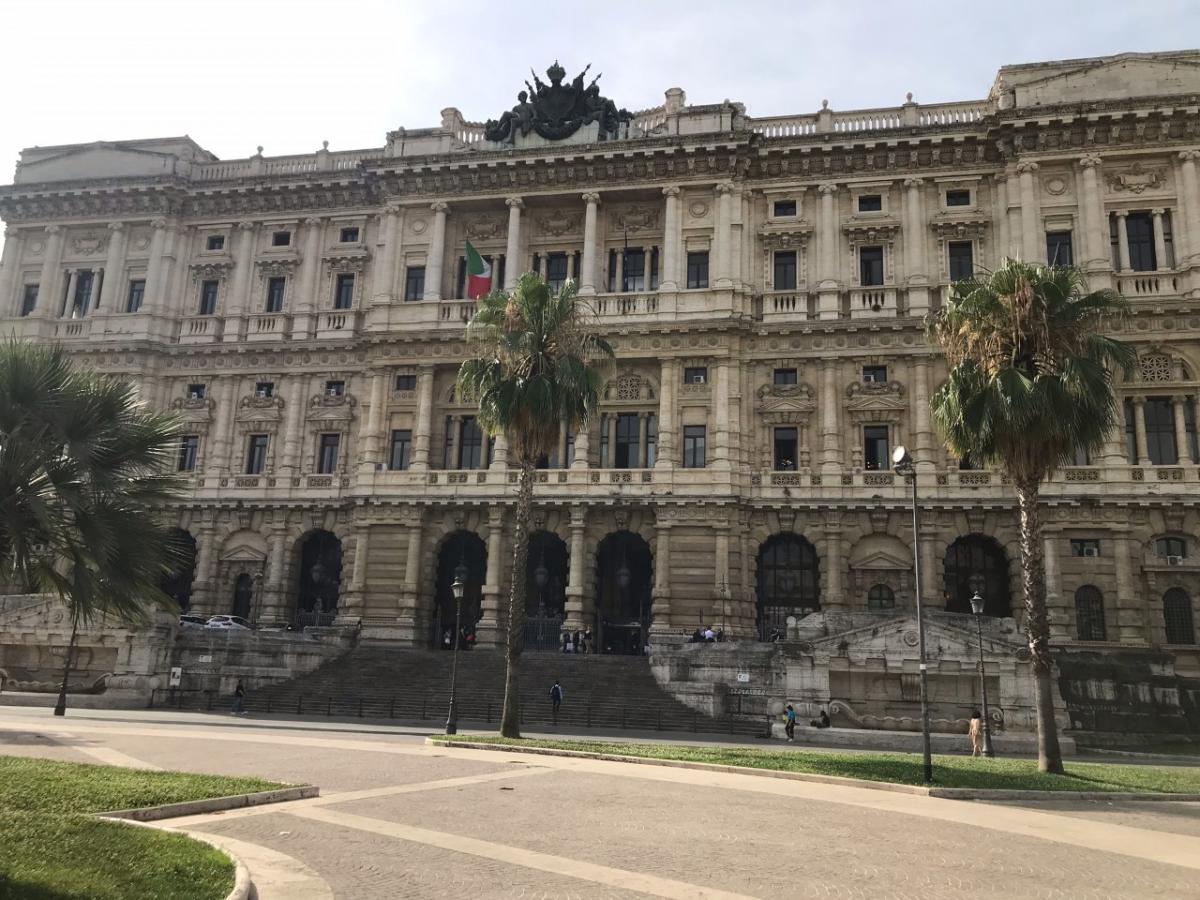 Italy's Palace of Justice
Italy's Palace of Justice
Clorrie Yeomans interviews Operation Condor expert, Dr Francesca Lessa, for Latino Life to disclose her experiences on the ground at the Rome trial. Lessa is a lecturer and researcher at the Oxford University Latin American Centre and the Oxford Department of International Development. Since 2013, she has attended the Operation Condor trials in Buenos Aires and Rome and has collaborated with victims, journalists, and NGOs. Lessa has published widely on transitional justice and combatting impunity for international human rights violations in the Southern Cone, including her upcoming book which is provisionally entitled: The Condor Trials: Transnational Repression and Human Rights in South America. Alongside her publications and teaching commitments, Lessa is creating the Database on South America’s Transnational Human Rights Violations and has already confirmed over 760 cases of victims of transnational human rights violations in South America between 1969 and 1981.
Latino Life: Can you explain for our readers why you went to Rome in July?
Francesca LessaL: I was in Rome to listen to the final verdict of Italy’s Supreme Court. This was the final stage in a trial that began six years ago in its public phase but which actually stemmed from a much longer investigation of a case which dates back to 1999. So, the sentence on the evening of 8th July was really the culmination of over twenty years of efforts by victims, their relatives, human rights lawyers, activists, researchers, and journalists who have supported this process. The verdict was very satisfactory because all the remaining defendants in the proceedings had their sentence of life imprisonment confirmed.
LL: Can you describe the atmosphere surrounding the trial in Rome?
FL: On the Thursday (the first day of the hearing), you could feel some anticipation, and also a little bit of tension, because you had the lawyers for both the defendants and the victims and the public prosecutor who made an opening statement… With these cases, I think that there is always a little bit of uncertainty because they relate to events far away in time and also geographically distant from Italy. So, it’s always a little bit difficult to tell how things will go…. compared to a normal trial concerning let’s say a murder or a robbery that happened recently. These trials are investigating systematic human rights violations or crimes against humanity that were committed four decades ago. So they are major trials in that sense. In Italy, we have only had three such trials which is why it was also a little bit tricky to tell how things would go.
Everyone was quite excited and looking forward to the sentence and then, because at the end of Thursday, the news emerged that several of the defendants had passed away, there was a little bit of anxiety since it was not sure if the death certificates from Uruguay and Peru would arrive on time. There was a chance that the verdict would have to be postponed until September and this was a cause of anxiety for the relatives who had waited for almost fifty years already. Although, for us, maybe, one day doesn’t seem to make much difference, for them it’s yet another obstacle that they have to face. Luckily, the death certificate of the Uruguayan defendant arrived within an hour. The Peruvian case was a bit more complicated so they removed the Peruvian defendants from the proceedings and their appeal will be treated separately; exactly to avoid prolonging the sentence for the victims’ families once again.
So, on Friday, I think the feeling was one of relief that we could actually listen to the sentence without any more delays… happiness, lots of tears of both satisfaction and relief… as the relatives had to put up with lots of amnesty laws in Argentina, Uruguay, and Chile and had to take the difficult decision to travel all the way to Italy to try to obtain justice there. It was really the culmination of a lifelong struggle for them.
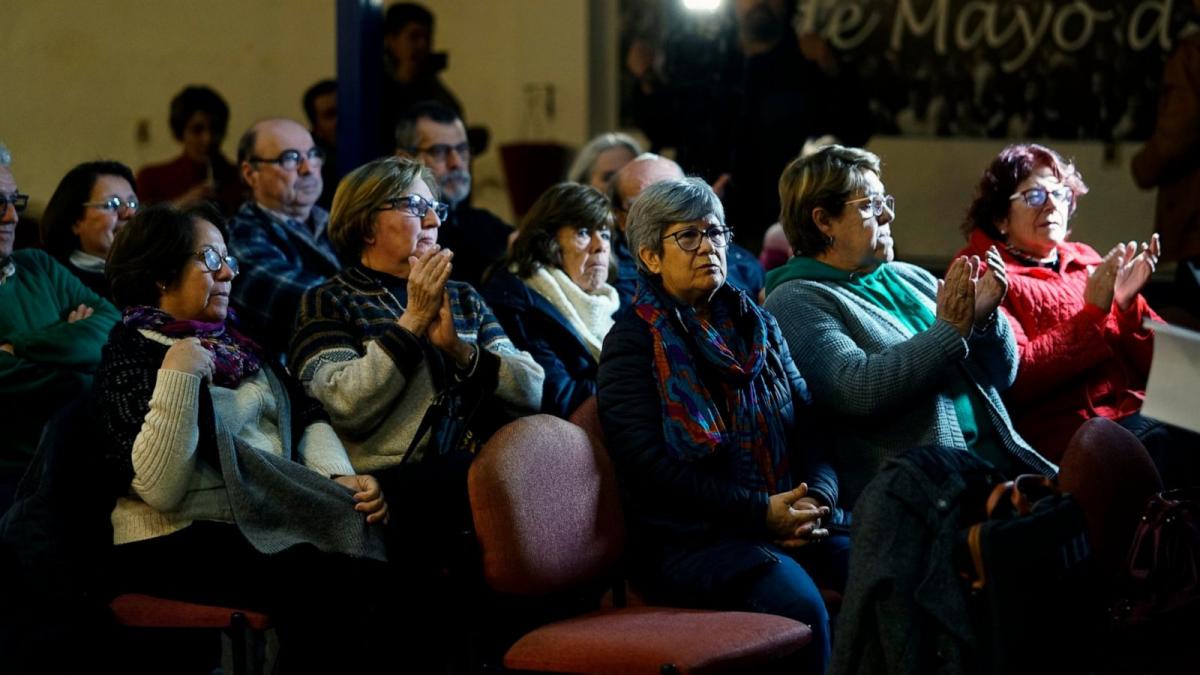 Families of victims of Operation Condor
Families of victims of Operation Condor
LL: Did the trial receive much media attention at the time?
FL: Yes, the trial received quite a lot of media attention in Italy and in South America. Not so much in the English language publications, unfortunately, and so, one of my tasks is going to be to try to remedy that soon. However, in Italy, it was shown on the national news and was in all of the major newspapers the following day. Particularly in Uruguay and in Chile, which is where the defendants were from, there was massive media interest. I was helping Uruguayan journalists by sending them photographs and doing some interviews with lawyers surrounding me. Especially in Uruguay, due to the high number of defendants who were involved in this case, there has been a lot of interest. Also, because one of these 11 defendants fled Uruguay in 2007 to avoid being prosecuted for those crimes. Since the defendant was a double national, Italy had to investigate the crimes of which he was accused. Everybody else was trialled in absentia; meaning they were not physically there. However, he was the only one who was physically in Italy for the trial so first thing on the Saturday morning, he was arrested and taken to the closest prison until they send him to an adequate prison to serve his life sentence. For Uruguay, this was very important because he had escaped justice for so long and he will finally have to serve his time in prison.
LL: Did the verdict provoke any backlash in Italy and/or South America?
FL: No, I don’t think that the case provoked backlash. I think that there’s always a group of politicians and the so-called ‘veto players’ who were, of course, not very impressed with the verdict. So, what we have seen in a couple of newspaper articles in Uruguay is, again, attempts to reinstate some kind of amnesty or impunity law. I don’t think that this will occur because they have tried to do this since last year and, luckily, it has not gone anywhere. I believe that this is probably a sort of backlash to the news. With Uruguay facing scrutiny by the Inter-American Court of Human Rights for the second time due to delays in domestic investigations of dictatorship-era crimes, even if they were to pass such an amnesty law, it would immediately become invalid. The verdicts that the Inter-American Court has given are very clear that these types of laws cannot be used to prevent any investigations.
LL: What do you think the message will be from Rome now? Will we see what Margaret E. Keck and Kathryn Sikkink call a ‘boomerang effect’? Or, do you consider that the work is now finished?
FL: No, I don’t think that the work is finished. In fact, there is at least one new case that begun two years ago and… of course, progress has been hampered by the pandemic. There is at least one case that can occur in Italy pretty soon against this same Uruguayan individual who has been accused of several crimes. We also have the cases of two other Italo-Argentines who fled to Italy to escape prosecutions in Argentina and the justice system is moving against them. Hopefully, we will see at least two or three more trials in Italy.
With any luck, there will be a bit of a ‘boomerang effect’ in South America and also more generally. What is really fascinating about the Rome verdict is the message that it sends, on the one hand, to South American countries by showing that investigations, prosecutions, and convictions can take place. Hopefully, this will put some pressure on countries such as Uruguay which has been very much lagging behind other countries such as Argentina and Chile in terms of conducting its own investigations. On the other hand, the verdict sends a message to all human rights violators that, as with the case of this Uruguayan defendant, even if you escape to another country where you think you will be safe, you might be safe for a number of years but sooner or later, the wheels of justice will catch up with you. What is specific to the Rome case is that it is a message to all ‘wannabe’ human rights violators that justice is going to be on their case and they are not going to enjoy a life of impunity, as they would like in many cases.
LL: Dr Lessa, of course, you are an advocate for transitional justice. But can you explain to our readers why you believe that it is important to investigate crimes that were committed over forty years ago? Some may argue that we are better off focusing on prosecuting crimes which are occurring in the region today…
FL: So, I don’t think that the two objectives are mutually exclusive. I consider that they are actually complementary. Of course, it is important to investigate the crimes that are taking place today in Latin America: the world’s most violent region. Many crimes- especially against women, LGBTI communities, and indigenous communities- are sadly occurring every day. This is therefore, of course, a key priority for all South and Central American states.
However, I think that this cannot be separated from the crimes of the past because some of the root causes of the violence today do trace back to what was happening in these same countries 50, or even 100, years ago. So, the message of prosecuting even past human rights violations is important in terms of: on the one hand, unleashing a deterrence effect for any potential perpetrators, but also, in terms of securing reparations to the victims whose rights have been violated.
I would say that, especially in the case of the countries in the Southern Cone, victims have explicitly wanted justice in the form of a criminal verdict. I think that it’s also essential to listen to them and try to do as much as possible to fulfil their demands. Depending on the countries where these processes are taking place, there may be different demands and different priorities. So, I don’t mean to say that prosecutions should take place everywhere because maybe in communities in Asia or Africa there are other methods or other priorities that may be more relevant. The specific demands of criminal prosecutions are very typical of Argentina, Chile, and Uruguay, and so, it is important that the governments and the judiciaries across this region do deliver on these methods. This must occur in the near future since many of the relatives are passing away, as well as the perpetrators. So, they have to try to be faster at resolving these cases that have been pending for over forty years.
LL: You mentioned that there are recurring crimes targeting women and LGBTI individuals in Latin America. What was the role of intersectionality during the trials?
FL: In this specific case, we had quite a few women who were persecuted for being political militants during the 1970s in South America. Many of the crimes that they suffered included sexual violence which tends to be spoken about mainly with women. However, we shouldn’t forget that men also suffered from sexual violence (despite that there has been much more reluctance among men to talk about it), as well as the LGBTI community.
One other issue related to women specifically is that many of them who were pregnant during the time of detention were kept alive until they gave birth. So they could give birth to babies who would be adopted illegally by families who were loyal to these regimes and soon after giving birth, these women would be killed. This introduced an additional gendered aspect due to the exploitation of motherhood. They [state actors] have no well-intended feelings towards these women but they basically kept them alive to give birth to these babies so that they could be sold in these illegal adoption networks. This did not come up so much in this specific trial but we know from Chile, for example, that some of the indigenous communities were also persecuted by the dictatorship there. So, it does vary a bit by country and since this trial concentrated on Uruguay and Argentina, the focus on indigenous groups did not emerge so much. Instead, the main focus was on gender and motherhood issues. There were four or five of these stolen babies who eventually discovered their identities and went to Rome to testify about what they had experienced and to finally attempt to establish what had happened to their biological parents.
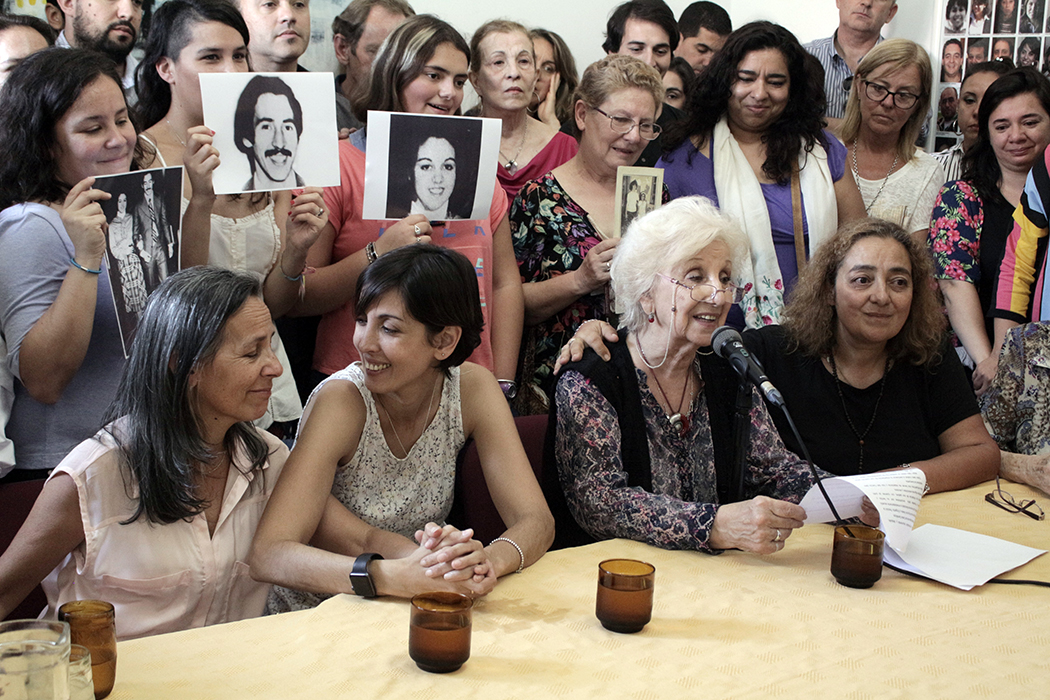 grandmothers still look for the children of their pregnant daughters who gave birth in detentiaon before being 'disappeared'
grandmothers still look for the children of their pregnant daughters who gave birth in detentiaon before being 'disappeared'
LL: Thank you very much, Dr Francesca Lessa, for sharing your first-hand knowledge and expertise on the Operation Condor investigations with Latino Life readers.


